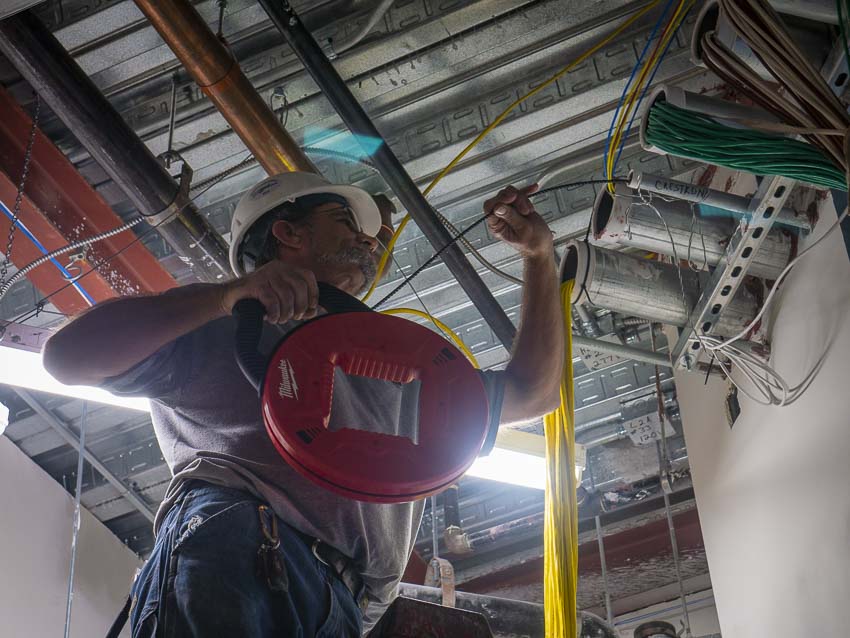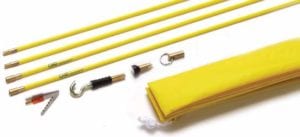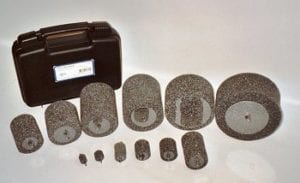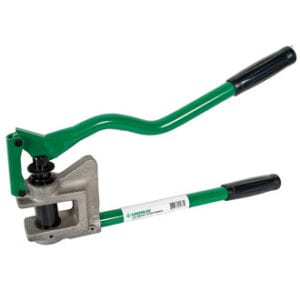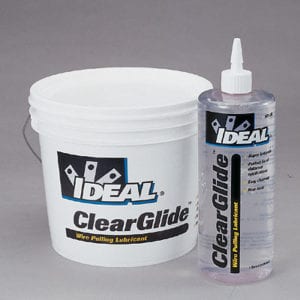You may have seen professional electricians use a variety of tools to pull cable and wire. It doesn’t matter if you’re pulling high or low-voltage cables—you need the best electrical wire pulling tools for the job. You also need to understand the different ways in which each of these tools works.
While wire pulling is simply part of the job, but it can slow down those new to the electrical trades. Recent advances have thrust new products onto the market, however. These electrical wire pulling tools can really save you time and money if used properly. Whether you find yourself in a complex retrofit or a new commercial job, the right electrical wire pulling tools can reduce frustration and shave hours off the job.
What are the Most Common Electrical Cable Pulling Tools?
We want to cover several things in this article. First, we want to help you select the right wire pulling tools for the job. Second, you need to understand how those tools work and in what scenario each excels. The right tool can land you in a happy place—and the wrong tool may put set you up for some long, grueling hours. Each tool, from fish rods and tape to conduit pistons and pull cord, has its place.
Fish Tape
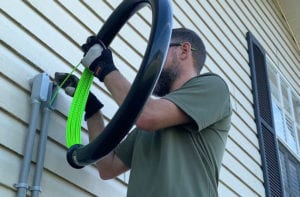
This is your number one stop for pulling 12 gauge wires or even low voltage cable through conduit. A good fish tape is going to make or break you. We look for features that keep you safe or speed up the work.
Consider opting for non-conductive material like fiberglass or a threaded or adjustable nose pin that easily adapts to your needs. Fiberglass tapes will offer additional protection against contacting a live circuit. The trade-off is rigidity. A steel tape can push and pull with a lot more authority and strength before bending.
When you get a fish tape, make sure you have ample length for the type of work you do. Also, be sure to get something that has a stable and solid reel not prone to binding. We really like the Southwire SIMpull series as well as some models from Klein Tools. With truly long, bendy runs of 1/2-inch conduit, you may require the stiffness of more traditional steel or fiberglass products.
- Best Fiberglass Fish Tape: Southwire SIMpull non-conductive fish tape (video) – Buy Now ($76.99)
- Best Steel Fish Tape: Klein steel fish tape – Buy Now ($24.99)
Wire Pulling Rods (Fish Rods)
The difference between fish tape and rods is that rods are shorter lengths of material that are not used in conjunction with a reel. Where reels are great for long conduit runs, rods are excellent for fishing up and down wall cavities and across other hidden areas where their extra rigidity gives you an edge. You also typically have the ability to splice rods together for greater lengths.
Other features to consider include glow rods that are easily visible in ceiling, floor, and wall cavities. If you only do light work or short distances, non-conductive wire pulling rods are going to be your staple product.
Rods typically come in lengths of 3 to 6 feet, and several in between. There are numerous heads to accomplish nearly any task (magnetic, loops, hooks, etc). Rods are perfect for pulling network lines, cable/satellite TV, telephone, thermostat, and other wiring or cable short distances. Klein has a recent line of Splinter Guard fiberglass fish rods that we absolutely love. They do a better job at not creating immediate splinters as the rods invariably run up against joists, drywall, and other materials on a daily basis. They also glow in the dark.
- Best Fiberglass Fish Rods: Klein Tools Splinter Guard fish rods – Buy Now ($144.99)
- Also: Greenlee Fiberglass Fish Rods – Buy Now ($63.27)
Conduit Pistons, Airbags, and Blower/Vacuum Systems
You have never fished string or leader wire until you’ve attached it to a conduit piston and literally sucked it through a line. No-fuss, no-muss. The added benefit is that the conduit gets cleaned out in the process. This works really well for high-end residential and commercial jobs that require a new wire to be run through conduit over longer distances. There is some prep work involved, but it’s an excellent solution. For bent or obstructed conduit, you can use airbags that adapt better to the needs of conduit that isn’t a straight shot.
Light Nylon Pull Cord/String
If you’re going to pull electrical cable, you want to use an appropriately-sized nylon string that is strong, light, and ready to provide a lot of tensile strength. You’ll see tensile strength marked in “pounds”. That’s pounds of pull force and you can typically find values between 22 and 500 lbs. Keep in mind that higher strength typically means a heavier cord. You can even buy, from some companies like Kena, piston/pull string combo packs that come ready to be vacuumed through a line (see above).
For truly short runs, you can also investigate systems like the Klein Tools magnetic wire pulling system – Buy Now ($38.91) or the Fish n Pull wire pulling system.
Metal Stud Punch
When dealing with residential electrical jobs, a right angle drill usually suffices for creating holes in metal. If, however, you plan to run conduit through steel studs in a commercial setting, you might want to invest in a metal stud punch. This takes the hassle out of inserting metal conduit through steel studs.
Good models will handle up to 20 gauge steel and also insert stud bushings to protect your conduit and cable from sharp metal edges.
In continuing with our commercial conduit theme, a conduit bender is also essential. While you can get a more sophisticated model, there are a handful of manual “hand” benders that work extremely well provided you aren’t going to bend a ton of material in a day. The “hand” benders rely on your feet, with the metal handle guiding the fulcrum of the bend. For larger jobs, a power bender often arrives on the scene to facilitate larger pipe and higher numbers of bends.
- Best conduit bender: Klein conduit benders – Buy Now ($40-$80)
- Best power bender: Southwire Bendmax compact power bender – Buy Now
Wire Pulling Lubricant
It sounds obvious (or like a bad joke) but lubricant makes your wire pulling easier. Better wire pulling lubricants leave less mess and go further per amount used. It’s a material that is non-corrosive to aluminum, copper, PVC, and galvanized steel. It dries to a non-toxic lubricating powder after it’s applied.
You primarily used this with high-stress electrical work as well as communications cable pulling. These are areas where friction is your enemy. The lubricant is water-soluble and typically doesn’t bother the skin. The newest types we’ve seen claim 100% non-toxicity and environmental friendliness.
- Best wire pulling lubricant: Klein foam wire pulling lubricant
Summary
Hopefully, this guide will expose you to the best electrical wire pulling tools that can make this type of work more profitable for you and your company. The right tools can really cut down on time spent pulling wire through walls or conduit. Knowing about some of the more obscure tools—like airbags—should result in a lot more friendly piston-style pulling of cable through imperfect conduit. Improvements in fiberglass glow rods and foam lubricant also promise to speed up your workflow. Let us know your personal favorite wire pulling tools in the comments below.
Why You Can Trust Pro Tool Reviews
Ever check out a “review” site and you can’t tell if they actually tested the tools or if they’re just “recommending” the Amazon top sellers?
That’s not us. We only recommend what we’d actually use, even if we don’t earn a commission from it. It’s all about giving you a legitimate recommendation and our honest opinion of each product.
We’ve been in business since 2008 covering tools, writing reviews, and reporting on industry news in the construction, automotive, and lawn care industries. Our Pro reviewers work in the trades and have the skills and experience to know whether tools can perform well in the field.
Each year, we bring in and review more than 350 individual products. Our team will put our hands on hundreds of additional tools at media events and trade shows throughout the year.
We consult with innovators in the technology and design of tools to gain a broader grasp of where these products fit and how they work.
We work with more than two dozen professional contractors around the United States who review products for us on real job sites and consult with us on testing methods, categories, and weighting.
We’ll provide more than 750 pieces of new content this year absolutely free for our readers—including objective evaluations of individual tools and products.
The end result is information you can trust because of the editorial, scientific, and real-world professional experience we collectively utilize each and every time we pick up and test a tool.

